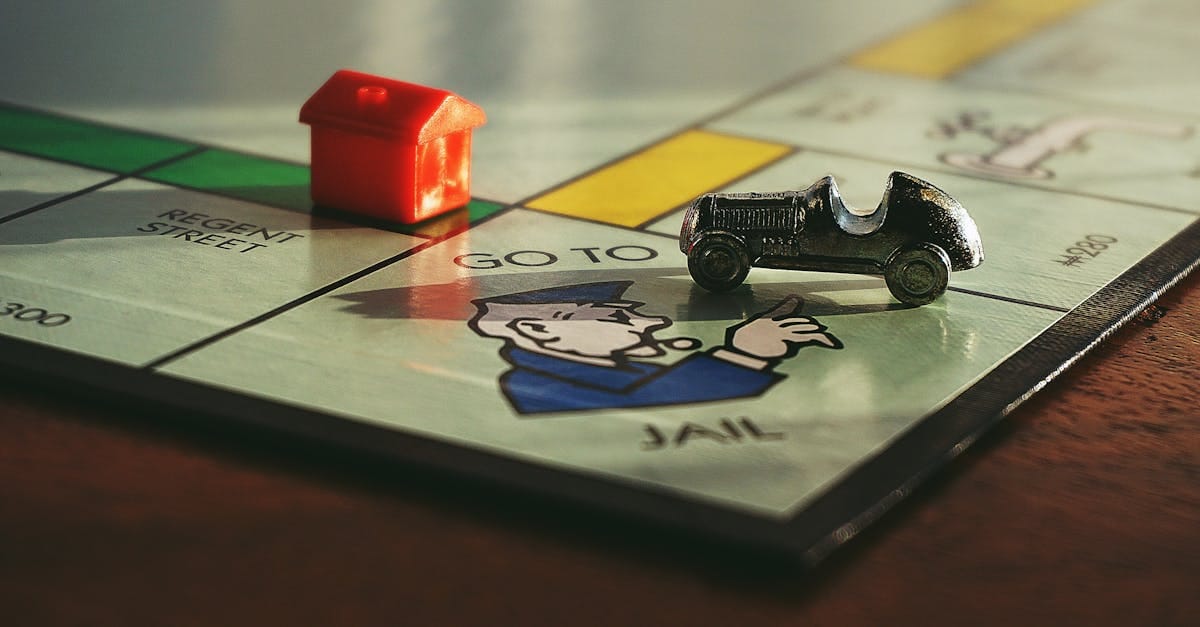The 60-30-10 rule in color design is a guideline for achieving a balanced and harmonious color palette. It divides color usage into three categories: 60% for the dominant color, which sets the overall tone; 30% for the secondary color, used to create contrast; and 10% for the accent color, which highlights important elements. This principle not only enhances aesthetic appeal but also guides user interaction and experience. Understanding how to apply this rule effectively can lead to visually engaging designs that resonate with users, making the 60-30-10 rule essential for successful color application.
Current Trends in Home Painting and Remodeling
Transforming a home is not just about aesthetics; it’s about creating a space that reflects personal style and enhances the living experience. In today’s dynamic environment, the realm of home painting and remodeling is evolving rapidly, presenting exciting opportunities for homeowners looking to update their spaces. From adopting innovative color palettes to exploring sustainable materials, homeowners are more empowered than ever to revitalize their surroundings.
As trends shift, there is a growing emphasis on color psychology, where hues are chosen not only for their beauty but for their emotional effects. Additionally, techniques like accent walls and textured finishes are gaining popularity, providing unique ways to express creativity. This article will delve into the latest developments and practical tips in painting and remodeling, guiding homeowners through the selection of stylish colors, materials, and techniques to create harmonious and inviting spaces. Whether planning a minor update or a major transformation, understanding these trends can lead to remarkable home environments that resonate with comfort and modern flair.

| Element | Description |
|---|---|
| Dominant Color | Covers 60% of the design, setting the overall mood and tone. |
| Secondary Color | Occupies 30%, contrasting with the dominant color to create visual interest. |
| Accent Color | Represents 10% of the design, used for key elements to draw attention. |
| Balance | Ensures visual harmony and guides user navigation through the interface. |
| Color Psychology | Utilizes emotional associations of colors to enhance user experience. |
| Flexibility | The rule is a guideline that can be adjusted to suit specific needs. |
| Application in UI Design | Integrates with various design styles for cohesive and engaging interfaces. |
Current Trends in House Painting and Remodeling
Today’s homeowners are not just looking for aesthetic enhancements; they aim for transformations that reflect their personality and cater to modern lifestyles. House painting and remodeling have taken on a new significance, blending creativity with functionality. This article dives into the most notable trends in house painting and remodeling, highlighting popular colors, innovative materials, and techniques that can breathe new life into residential spaces.
Popular Colors for 2023
Color selection plays a crucial role in the ambiance of any space. This year’s trends emphasize earthy tones, pastels, and dramatic contrasts.
- Earthy Tones: Shades such as terracotta, sage green, and warm beiges are in vogue, providing a natural, calming atmosphere. These colors can easily create a sense of serenity, making them ideal for living rooms and bedrooms.
- Bold Accents: Homeowners are now leaning toward bold accent walls to inject personality into their spaces. Deep navy, forest green, and charcoal gray have become staples next to lighter primary colors.
- Pastel Palettes: Soft hues like blush pink, mint, and lavender are popular choices for adding a whimsical touch to kitchens and nurseries. They strike a perfect balance between playfulness and sophistication.
Techniques That Stand Out
In addition to color selection, innovative painting techniques can significantly impact the visual appeal of a space.
- Ombre Effects: This technique transitions one color into another, creating a soft gradient effect. It’s perfect for creating a statement wall or enhancing an atmosphere of depth.
- Textured Finishes: Using products that mimic textures, like faux concrete or aged wood, has become popular for adding visual interest. These finishes can transform an otherwise ordinary wall into a stunning focal point.
- Stenciling and Murals: Custom art on walls through stenciling or murals allows homeowners to leave their mark on the space. It’s an expressive way to showcase personal interests and can be adapted to any room.
Innovative Materials and Eco-Friendly Choices
With sustainability becoming a priority, many homeowners are choosing innovative materials that are not only aesthetically pleasing but also environmentally friendly.
- Low-VOC Paints: These paints reduce harmful emissions, improving indoor air quality without compromising color quality. They are a go-to for health-conscious homeowners.
- Recycled Materials: Many modern remodels incorporate recycled wood and sustainable materials for cabinetry and flooring, making spaces stylish and eco-friendly.
- Smart Paints: Innovations like solar-reflective and self-cleaning paints are being embraced. These paints can help regulate temperatures and reduce maintenance, respectively.
Trendy Remodeling Ideas
Remodeling is about enhancing functionality while staying true to aesthetic forms. Here are the latest ideas that have gained traction:
- Open Concept Layouts: Homes with open floor plans are increasingly popular, promoting better flow and social interaction. Removing unnecessary walls can help maximize space and enhance natural light.
- Outdoor Living Spaces: The trend of bringing the outdoors in is translating into remodeling projects focused on outdoor areas. Adding features like patios, outdoor kitchens, or fire pits can extend livable space and enhance connectivity with nature.
- Smart Home Integration: Modern remodels frequently include smart home technologies, from adjustable lighting to advanced climate control systems, allowing homeowners to manage their living environment remotely.
Furnishing Trends to Consider
Matching paint and remodeling choices with contemporary furnishings is vital for achieving a cohesive look.
- Multi-Functional Furniture: Smart furniture pieces that serve multiple purposes, such as sofa beds, extendable dining tables, and storage ottomans, cater to the needs of space-challenged homes.
- Sustainable Furnishings: Just like paints, eco-friendly furniture made from sustainable sources is a growing trend, meeting aesthetic needs while advocating for environmental responsibility.
- Mid-Century Modern Styles: The timeless appeal of mid-century modern furniture is making a comeback, offering clean lines and organic shapes that fit well with many paint palettes.
The combination of trendy colors, innovative materials, and thoughtful remodeling ideas allows homeowners to create spaces that are both beautiful and functional. As trends evolve, the incorporation of personal elements and eco-friendly choices remain essential. Homeowners can visit TSPaintingPro for more insights into top interior paint choices that can help realize their dream projects.

Transform Your Home Today!
Ready to elevate your living space? Our professional painting and remodeling services will bring your vision to life. From stunning color palettes to innovative designs, we ensure quality and satisfaction in every project. Reach out to discover how we can enhance your home!
Current Trends and Tips in Painting and Home Remodeling
Trends in Home Remodeling
- Eco-friendly Materials: More homeowners are opting for sustainable materials that reduce environmental impact, such as reclaimed wood and recycled metals.
- Open Concept Spaces: Creating spaces that flow into one another is popular, making homes feel larger and more inviting.
- Smart Home Tech: Incorporating technology into homes, from smart lighting to energy-efficient systems, is on the rise, enhancing both convenience and efficiency.
- Customized Spaces: Tailoring spaces to individual lifestyles, such as home offices or personalized playrooms, reflects current family dynamics and needs.
These trends highlight a shift towards creating homes that are not only functional but also align with personal lifestyles and environmental responsibility.
Painting Techniques
- Accent Walls: Utilizing bold colors or patterned wallpaper on a single wall can add character to any room without overwhelming the design.
- Soft Neutrals: Shades like beige, soft grays, and whites are popular for creating a calm and inviting atmosphere in a home.
- Textured Finishes: Techniques such as sponging, rag rolling, or even applying metallic or matte finishes can enhance the visual interest of surfaces.
- Color Psychology: Understanding how different colors influence emotions can guide color choices, with blues promoting tranquility and vibrant colors stimulating energy.
These painting techniques not only refresh a space but also allow homeowners to express personal style and improve the mood of their living environments.
Practical Tips for Painting and Remodeling
- Plan Ahead: Define a clear vision including color schemes, themes, and the functionality of the remodeled space before starting.
- Invest in Quality Materials: Choosing high-quality paints and materials can ensure durability and a superior finish that stands the test of time.
- Sample Colors First: Always test paint colors in different lighting before making a commitment to avoid costly mistakes.
- Hire Professionals Wisely: When selecting contractors, look for reviews and portfolios to ensure they align with your remodeling vision and standards.
- Maintain Cleanliness: During renovation, ensure that work areas are kept clean to prevent accidents and maintain a professional look.
Implementing these practical tips can make the remodeling and painting process smoother and more efficient, resulting in beautifully transformed spaces.
Frequently asked questions
Glossary of Key Terms Related to Home Painting and Remodeling Trends
- Color Palette
- A selection of colors used together in a design to create harmony and visual appeal.
- Accent Color
- A vibrant color used sparingly to draw attention to specific elements within a design.
- Dominant Color
- The primary color that forms the main background or setting for a design, usually covering 60% of the space.
- Secondary Color
- A complementary color used to enhance and provide contrast to the dominant color, typically covering 30% of the design.
- Color Psychology
- The study of how colors influence emotions and behaviors, essential for creating effective designs.
- Neumorphism
- A design trend characterized by soft, embossed styles, creating depth through color and shadow.
- Neobrutalism
- A bold design style that emphasizes raw, unrefined aesthetics with high contrast and strong visual elements.
- Visual Hierarchy
- The arrangement or organization of elements within a design that indicates their importance or relationship to one another.
- Texture
- The visual or tactile quality of a surface, often added through paint techniques or materials for depth and interest.
- Remodeling
- The process of altering and improving a space, often involving changes to its structure, layout, or aesthetic.
Understanding the 60-30-10 Rule in Color Design is essential for creating balanced and visually appealing interfaces. This rule not only helps maintain a harmonious composition by designating 60% for the dominant color, 30% for the secondary color, and 10% for the accent color, but also enhances user experience by guiding the viewers’ attention effectively. By harnessing the power of this rule, alongside the insights provided on color psychology, designers can craft engaging and intuitive environments. Embrace these principles in your projects to elevate your design game and create impactful user experiences.
Defining Your Color Palette
The foundation of effective color design lies in the selection of colors. Here are some vital recommendations for establishing your color palette:
- Choose a Dominant Color (60%): Select a neutral or soft color that will serve as the base for your design. This color should be used primarily for the background or largest surfaces.
- Determine a Secondary Color (30%): Opt for a color that contrasts well with the dominant hue. This color should be used for elements like sidebars or photo accents, enriching the visual experience.
- Add an Accent Color (10%): Pick a vibrant and eye-catching color that will be used sparingly. Ideal for buttons or points of interest to grab user attention.
Applying the 60-30-10 Rule
The 60-30-10 rule is flexible and can be integrated into various design styles. Here are practical recommendations for applying this rule:
- Test Variations: While the rule suggests specific percentages, feel free to adjust slightly based on specific project needs. Maintain visual balance while customizing to your brand identity.
- Evaluate Color Psychology: Investigate the emotional impact of your chosen colors to ensure they resonate with your audience. For instance, blue conveys trust, while orange stimulates energy.
- Utilize Sufficient Contrast: Ensure that the secondary and accent colors provide adequate contrast against the dominant color, making key design elements stand out effectively.
Design with the End User in Mind
Ultimately, the success of using the 60-30-10 rule hinges on its impact on user experience. Keep the following in mind:
- Focus on Readability: Ensure that text and important elements are easily readable against the chosen color scheme to enhance usability.
- Gauge User Feedback: Collect user experiences post-launch to assess how the color choices affect navigation and interaction, refining based on real data.
Transform Your Home with Expert Painting and Remodeling!
Elevate your living space with our professional painting and remodeling services. Experience a fresh look, enhanced value, and a cozy atmosphere that reflects your style. Don’t wait any longer—contact us today to start your transformation journey!
Sophia Torres is the creative mind behind the most dazzling transformations at TS Painting & Restoration. With a strong background in interior design and a deep passion for tropical color palettes, she has helped hundreds of clients revitalize their spaces into vibrant and inviting environments. Born in Colombia and raised in Florida, Sophia brings a unique perspective to her work, blending Latin American influences with modern design trends.
Sophia’s vision of color goes beyond the conventional. She is known for her ability to create bold and unexpected combinations that reflect Florida’s natural beauty. Her focus on color psychology and strategic use of tones allows her to transform any environment, making each project a showcase of her clients’ personal style. On her blog, she shares practical tips on how to choose colors that not only beautify but also enhance emotional well-being and create harmony in the home.
When not working, Sophia enjoys exploring art galleries, experimenting with DIY projects, and finding inspiration in Florida’s lush landscapes. For her, design isn’t just about aesthetics; it’s about creating spaces that tell a story, reflect the identity of those who live there, and evoke positive emotions. At TS Painting & Restoration, Sophia is committed to helping homeowners discover how colors can transform their homes into true havens of tranquility and beauty.


